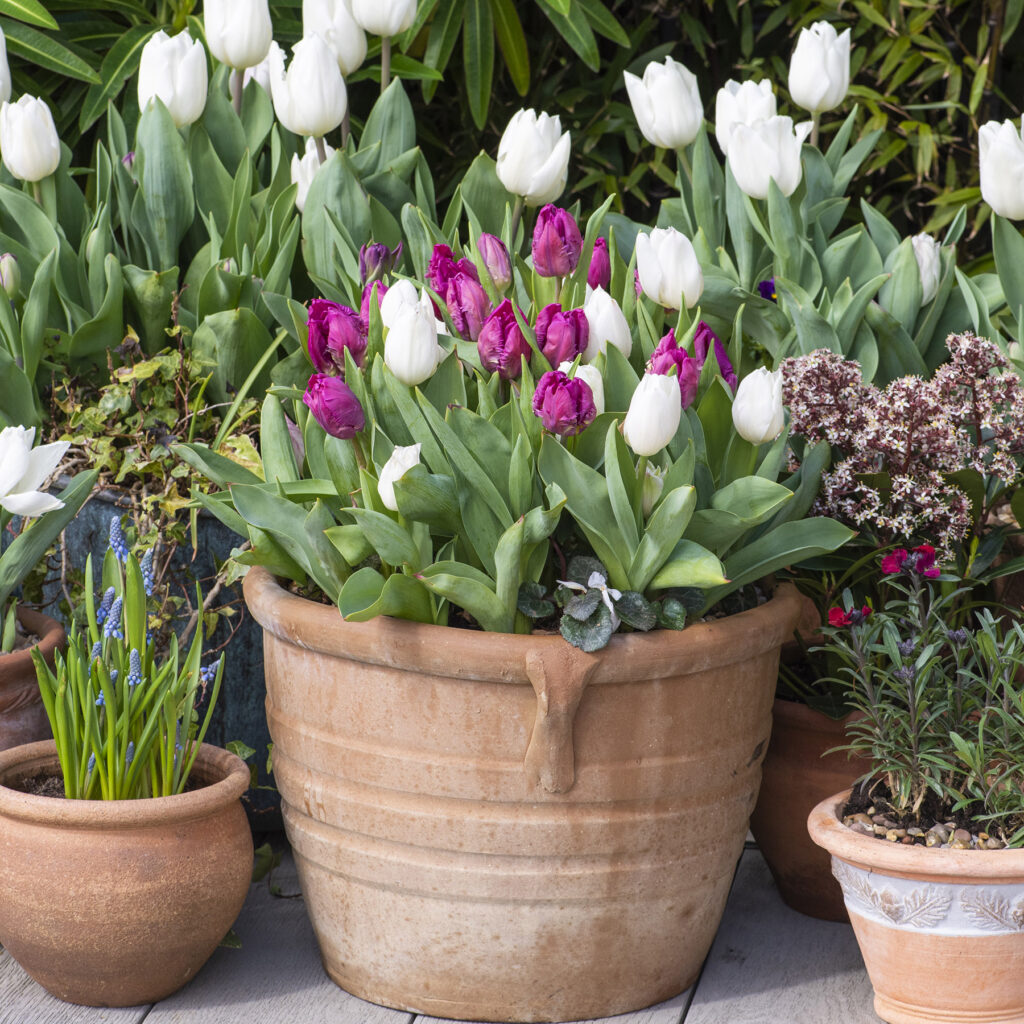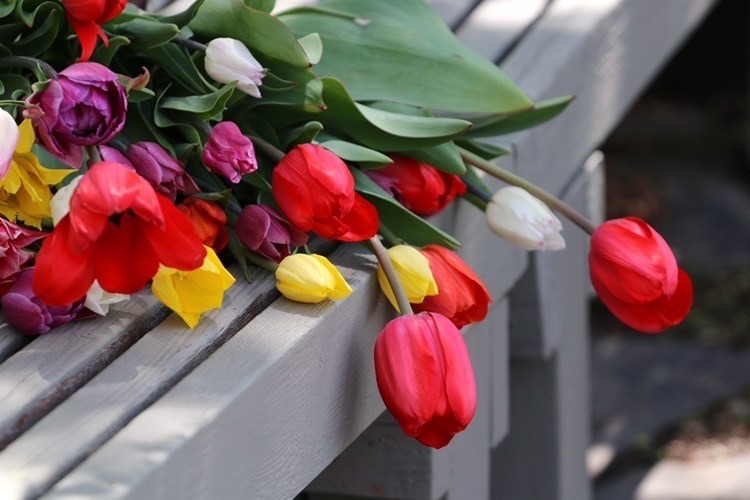Few flowers capture the heart of spring quite like tulips. Their bold colors, elegant shapes, and cheerful presence make them one of the most beloved spring blooms across gardens worldwide. Planting tulip bulbs is an easy and rewarding gardening project that pays off in spectacular fashion when winter fades and your garden bursts into vibrant life.
Whether you’re a beginner or a seasoned gardener, this comprehensive guide will walk you through everything you need to know about planting tulip bulbs for a stunning spring garden.

Why Grow Tulips in Your Garden?
Tulips (genus Tulipa) are not just visually stunning — they also symbolize renewal, hope, and perfect love. Available in nearly every color of the rainbow, from classic reds to creamy whites and even dramatic black varieties, there’s a tulip for every garden style.
Benefits of growing tulips:
- Brighten up spring landscapes with bold colors
- Easy to plant and care for
- Wide range of varieties to suit different garden designs
- Great for borders, containers, and cut flowers
- Can naturalize in the right conditions, returning year after year
When to Plant Tulip Bulbs
Timing is everything when it comes to tulips. These cold-hardy bulbs need a period of chilling to bloom beautifully in spring.
Best planting time:
- Fall, before the ground freezes
- Typically 6–8 weeks before your first hard frost date
- In most regions, this means planting between late September and November
This chilling period ensures the bulbs develop strong roots before winter and prepares them for a vibrant spring display.
Choosing the Right Tulip Bulbs
When selecting tulip bulbs, look for:
- Firm, plump bulbs with no signs of mold, softness, or shriveling
- Larger bulbs, as they generally produce bigger, healthier blooms
- Varieties suited to your growing zone and design preference
Popular tulip types:
- Single Early: Classic cup-shaped flowers in mid-spring
- Double Late (Peony-flowered): Full, lush blooms resembling peonies
- Parrot Tulips: Fringed, feather-like petals with striking colors
- Triumph Tulips: Strong-stemmed, ideal for borders and cut flowers
- Species Tulips: Smaller, naturalizing varieties that return yearly

Ideal Growing Conditions for Tulips
Sunlight:
- Full sun for at least 6 hours a day
- Partial shade tolerated but may result in shorter stems or fewer blooms
Soil:
- Well-drained, loose, sandy, or loamy soil
- Neutral to slightly acidic pH (6.0–7.0)
- Avoid areas with standing water or dense clay soil, which can rot bulbs
Tip: Improve drainage by mixing in compost, coarse sand, or well-rotted organic matter.
How to Plant Tulip Bulbs — Step-by-Step
Step 1: Prepare the Planting Site
- Remove weeds and debris
- Loosen the soil to a depth of 12–15 inches
- Mix in compost or bulb fertilizer to enrich the soil
Step 2: Dig the Holes
- Plant bulbs at a depth of 6–8 inches (three times the bulb’s height)
- Space bulbs 4–6 inches apart
- In containers, plant bulbs closer — about 1–2 inches apart
Step 3: Place the Bulbs
- Set bulbs with the pointy end facing up and the flat, root end down
- Gently press into the soil to ensure good contact
Tip: Plant in clusters or drifts rather than straight lines for a more natural, full look.
Step 4: Cover and Water
- Backfill with soil, lightly firming as you go
- Water thoroughly to settle the soil and encourage root growth
Optional: Apply a thin layer of mulch to insulate soil and deter weeds.
Watering and Feeding Tulips
After planting:
- Water well immediately to encourage root establishment
During winter:
- Nature usually handles this with rain and snow
- Avoid overwatering, as excess moisture promotes rot
In spring:
- Water during dry spells when foliage emerges and flowers develop
Fertilizing:
- Mix a slow-release bulb fertilizer or bone meal into the soil at planting
- Apply a balanced fertilizer again as shoots emerge in spring
Common Pests and Problems
| Problem | Cause | Solution |
|---|---|---|
| Bulb rot | Poor drainage, overwatering | Plant in well-drained soil, avoid soggy spots |
| Squirrels & rodents | Dig up bulbs for food | Use wire mesh, bulb cages, or repellents |
| Aphids | Feed on spring foliage | Spray with insecticidal soap or hose off |
| Fungal diseases | Excess moisture, poor air circulation | Avoid overhead watering, remove affected plants |

When and How to Cut Tulips for Bouquets
If you’d like to enjoy tulips indoors:
- Cut when buds are still closed but showing color
- Use sharp, clean shears
- Remove lower leaves to keep water clean
- Place in cool, fresh water and change it every couple of days
Tip: Tulips continue to grow after being cut, so leave some stem length for adjustment.
Post-Bloom Tulip Care
Once your tulips have bloomed:
- Remove faded flowers to prevent seed formation
- Allow foliage to yellow and die back naturally
This process replenishes the bulbs for next year.
Do not cut leaves early — they’re vital for photosynthesis and bulb strength.
Can Tulips Return Every Year?
While many tulips are grown as annuals, some types can naturalize and return for several seasons in the right conditions.
Best perennial tulip varieties include:
- Darwin Hybrid Tulips
- Species (Botanical) Tulips
- Fosteriana (Emperor) Tulips
To encourage reblooming:
- Ensure excellent drainage
- Avoid excessive summer moisture
- Allow leaves to die back naturally

Growing Tulips in Containers
Tulips thrive in pots and containers, perfect for patios, balconies, or small gardens.
Container tips:
- Use pots with drainage holes
- Plant bulbs closely (1–2 inches apart)
- Use a lightweight, well-draining soil mix
- Place in a cool, shaded area after planting and move to a sunny spot in spring
Overwintering:
In colder regions, protect containers in a shed, garage, or unheated basement to avoid deep freezes.
Fun Facts About Tulips
- Tulips are native to Central Asia and were first cultivated in the Ottoman Empire.
- The famous “Tulip Mania” in 17th-century Holland caused tulip bulbs to sell for more than a house at their peak.
- The Netherlands remains the world’s largest tulip producer, exporting millions of bulbs globally.
- There are over 3,000 registered tulip varieties in nearly every imaginable color.
Final Thoughts
Planting tulip bulbs is one of the simplest ways to ensure your spring garden comes alive with color, beauty, and charm. By choosing quality bulbs, planting them at the right time and depth, and providing proper care, you’ll be rewarded with a breathtaking floral display year after year.
So, grab your garden gloves, pick your favorite tulip varieties, and start planting this fall — your future spring garden will thank you with every bloom.





Leave A Comment